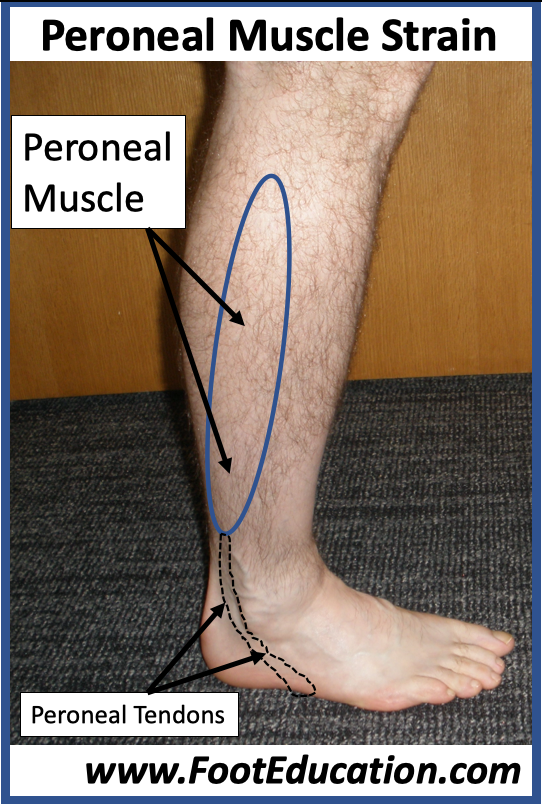Peroneal Muscle Strain
Summary
A peroneal muscle strain is an acute injury affecting the muscles on the outside part of the lower leg –either the peroneus longus or peroneus brevis. A peroneal muscle strain results in injured muscle tissue leading to pain, swelling, and bruising. Treatment is conservative with rest, ice, immobilization, and gradual reactivation over time. Most patients do well, although pain from residual peroneal muscle scarring can occur.
Background
A peroneal muscle strain is an acute injury to the peroneus brevis or longus muscle on the outside aspect of the lower leg (Figure 1). This lower leg muscle injury often occurs as a result of a sudden strong contracture from these muscles to prevent the foot and ankle from rolling inwards and suffering an ankle sprain. However, it can also occur from repetitive micro traumas to these muscles. The end result is a muscle strain, which is a direct injury to the muscle tissues. This results in local bleeding around the muscle tissue which shows up as bruising.

Symptoms Associated with a Peroneal Muscle Strain
Individuals suffering a peroneal muscle strain will have pain in the outside of the lower leg. There will be tenderness right at the area where the muscle tissue is injured. The muscle strain can occur anywhere along the course of the peroneal muscles (Figure 1). However, it commonly occurs where the muscles attached to the tendons, an area, known as the musculotendinous junction. The severity of the muscle strain will dictate the severity of symptoms. For a severe peroneal muscle tear patient may have difficulty walking and require crutches.
Imaging Studies
Plain x-rays of the lower leg will usually be normal.
An MRI of the lower leg will demonstrate evidence of the muscle tear with surrounding edema
Treatment of Peroneal Muscle Strain
Most peroneal muscle strains will heal successfully with conservative manage. However, for more severe injuries the recovery can take many weeks. For some patients the injured muscle tissue can create peroneal muscle scarring that may lead to chronic pain.
The initial treatment of a peroneal muscle strain is designed to let the symptoms settle and includes ice, relative immobilization, and the possible use of anti-inflammatory medication. Ice applied locally to the injured area can help decrease swelling, and improve pain control. Immobilization in a walker boot and the possible use of a cane or crutches can help protect the injured area. Patients are often quite limited in their activity level immediately after the injury.
More severe peroneal muscle tears can take a number of weeks for the symptoms to settle. During this recovery period it can be helpful to continue to try to gently move the muscles. This early movement may help to prevent excessive scarring. Once symptoms begin to settle after the initial injury a course of physical therapy can be helpful. The therapist will try and work on improving range of motion, mobilizing the soft tissues, and normalizing the patient’s gait. Most people will recover uneventfully, although depending upon the severity the injury the recovery time can be prolonged. However, a small percentage of people may have some residual localized discomfort due to peroneal muscle scarring.
February 3rd 2024